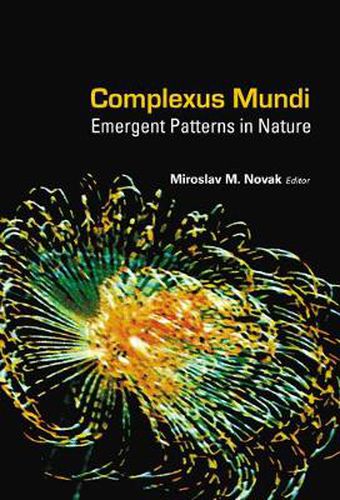Readings Newsletter
Become a Readings Member to make your shopping experience even easier.
Sign in or sign up for free!
You’re not far away from qualifying for FREE standard shipping within Australia
You’ve qualified for FREE standard shipping within Australia
The cart is loading…






The dynamics of complex systems can clarify the creation of structures in Nature. This creation is driven by the collective interaction of constitutive elements of the system. Such interactions are frequently nonlinear and are directly responsible for the lack of prediction in the evolution process. The self-organization accompanying these processes occurs all around us and is constantly being rediscovered, under the guise of a new jargon, in apparently unrelated disciplines.This volume offers unique perspectives on aspects of fractals and complexity and, through the examination of complementary techniques, provides a unifying thread in this multidisciplinary endeavor. Do nonlinear interactions play a role in the complexity management of socio-econo-political systems? Is it possible to extract the global properties of genetic regulatory networks without knowing the details of individual genes? What can one learn by transplanting the self-organization effects known in laser processes to the study of emotions? What can the change in the level of complexity tell us about the physiological state of the organism? The reader will enjoy finding the answers to these questions and many more in this book.
$9.00 standard shipping within Australia
FREE standard shipping within Australia for orders over $100.00
Express & International shipping calculated at checkout
The dynamics of complex systems can clarify the creation of structures in Nature. This creation is driven by the collective interaction of constitutive elements of the system. Such interactions are frequently nonlinear and are directly responsible for the lack of prediction in the evolution process. The self-organization accompanying these processes occurs all around us and is constantly being rediscovered, under the guise of a new jargon, in apparently unrelated disciplines.This volume offers unique perspectives on aspects of fractals and complexity and, through the examination of complementary techniques, provides a unifying thread in this multidisciplinary endeavor. Do nonlinear interactions play a role in the complexity management of socio-econo-political systems? Is it possible to extract the global properties of genetic regulatory networks without knowing the details of individual genes? What can one learn by transplanting the self-organization effects known in laser processes to the study of emotions? What can the change in the level of complexity tell us about the physiological state of the organism? The reader will enjoy finding the answers to these questions and many more in this book.